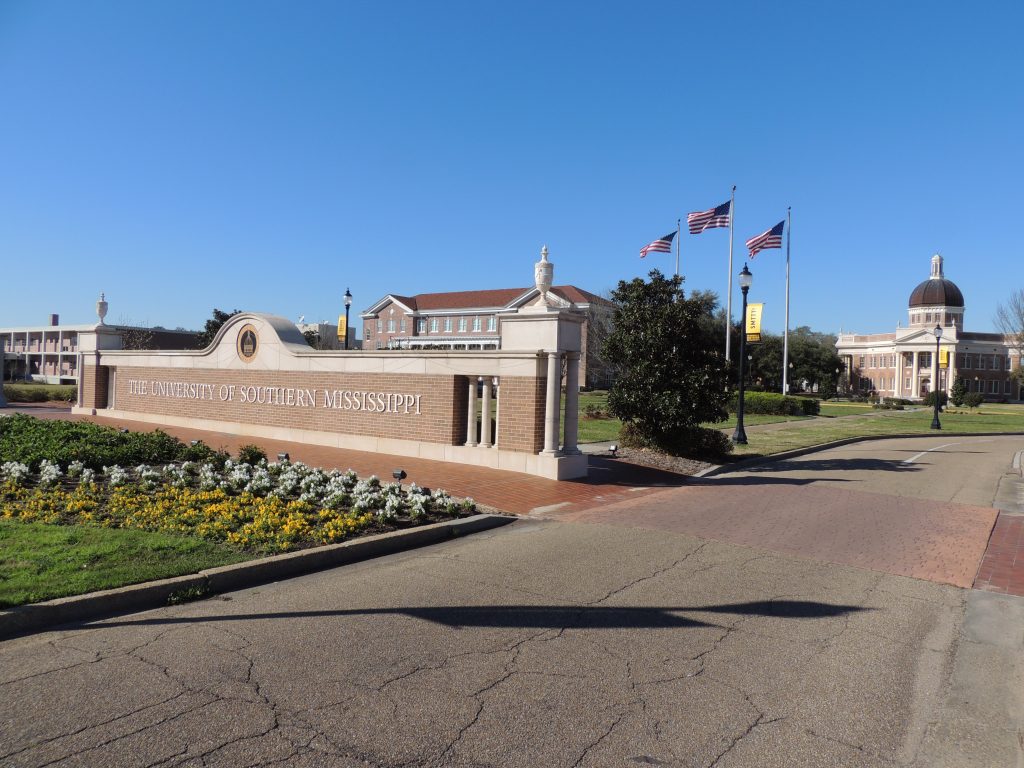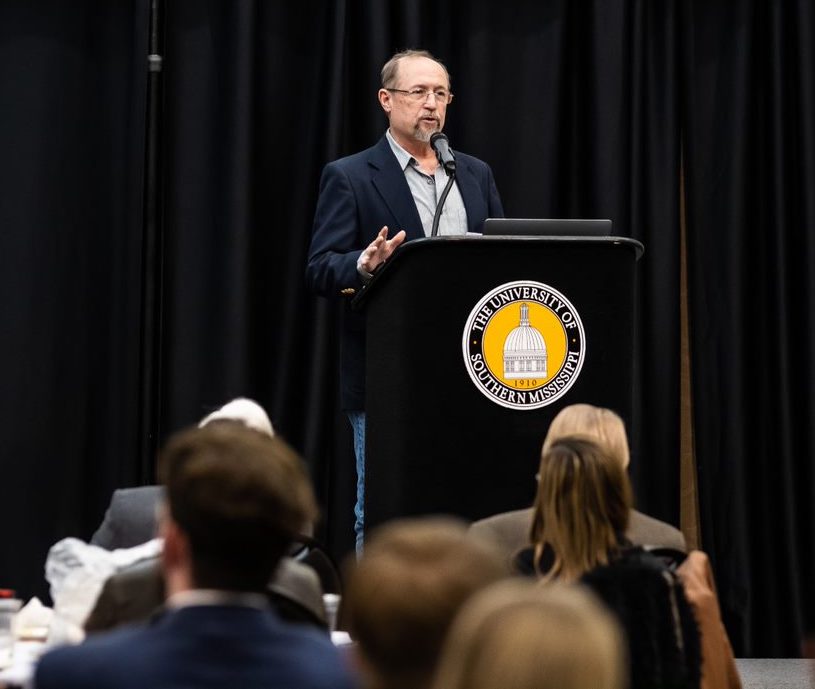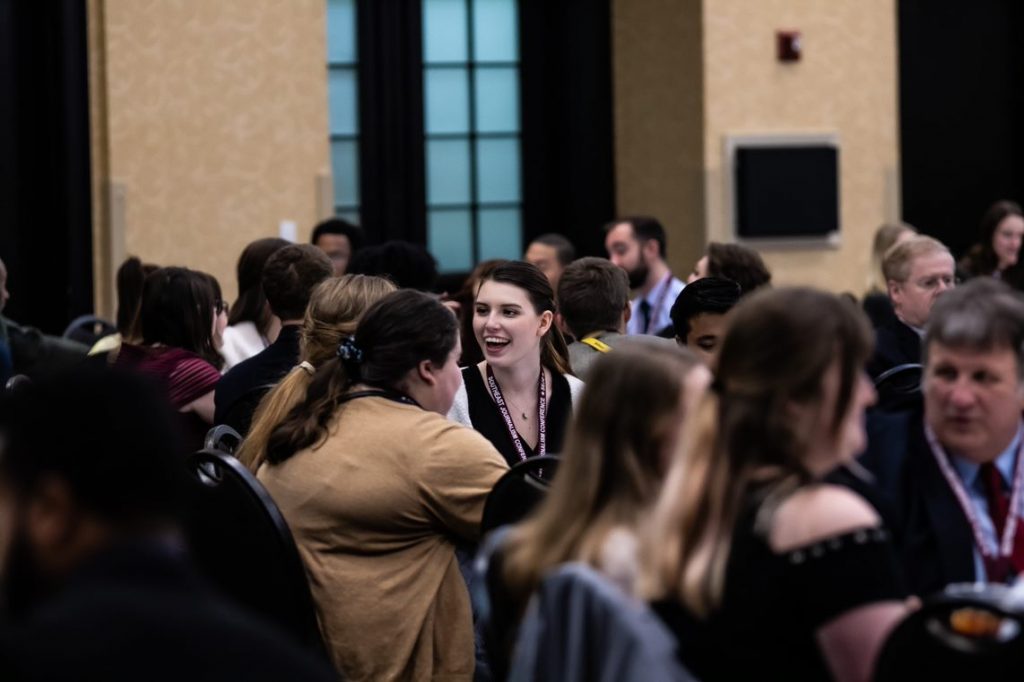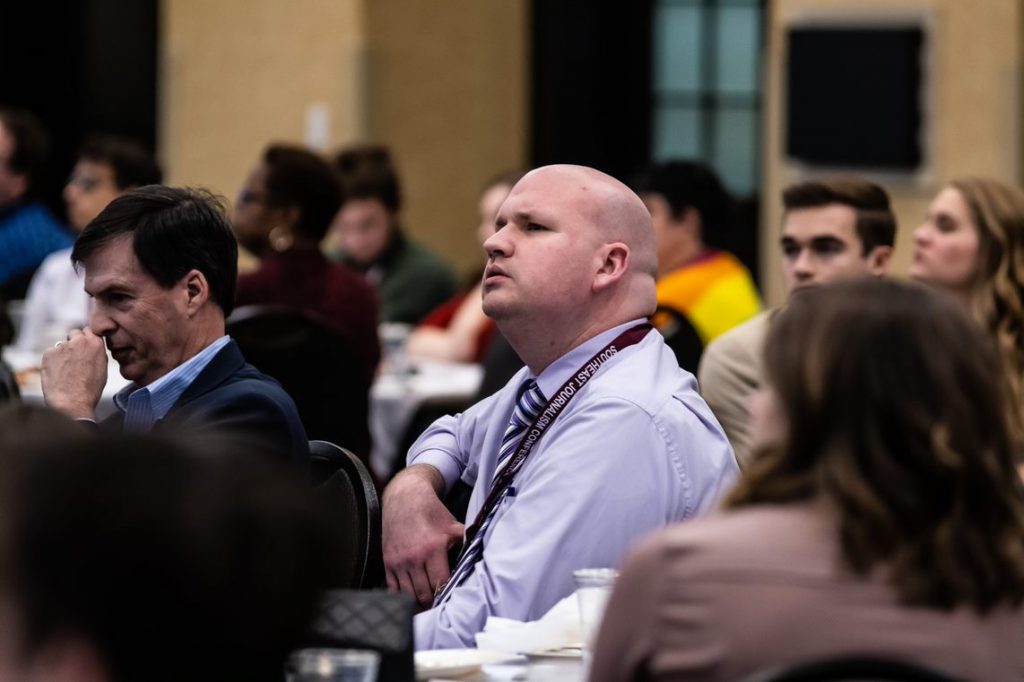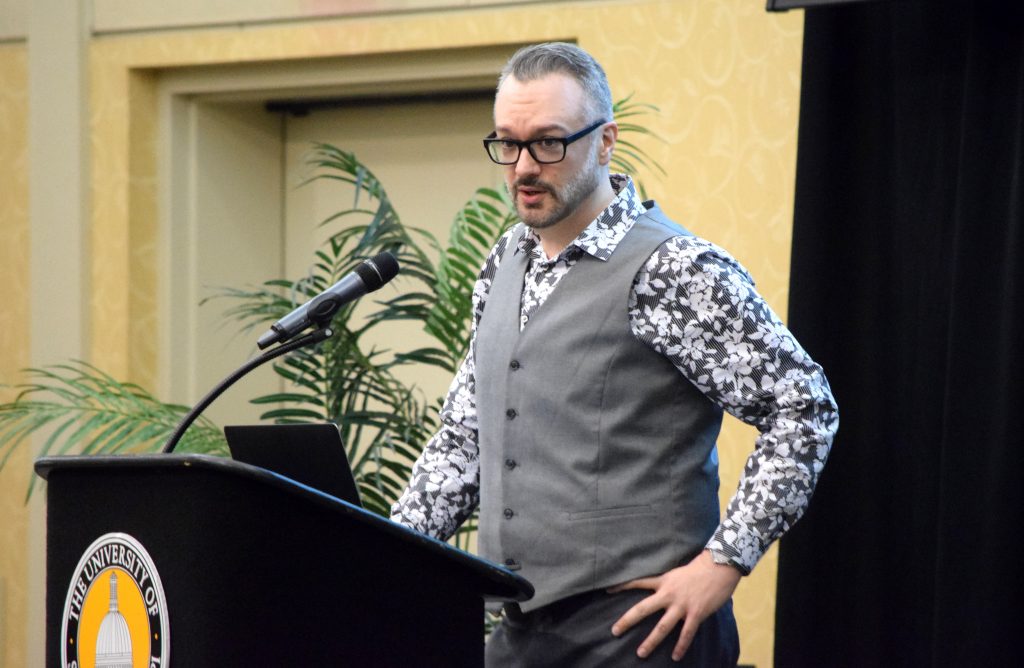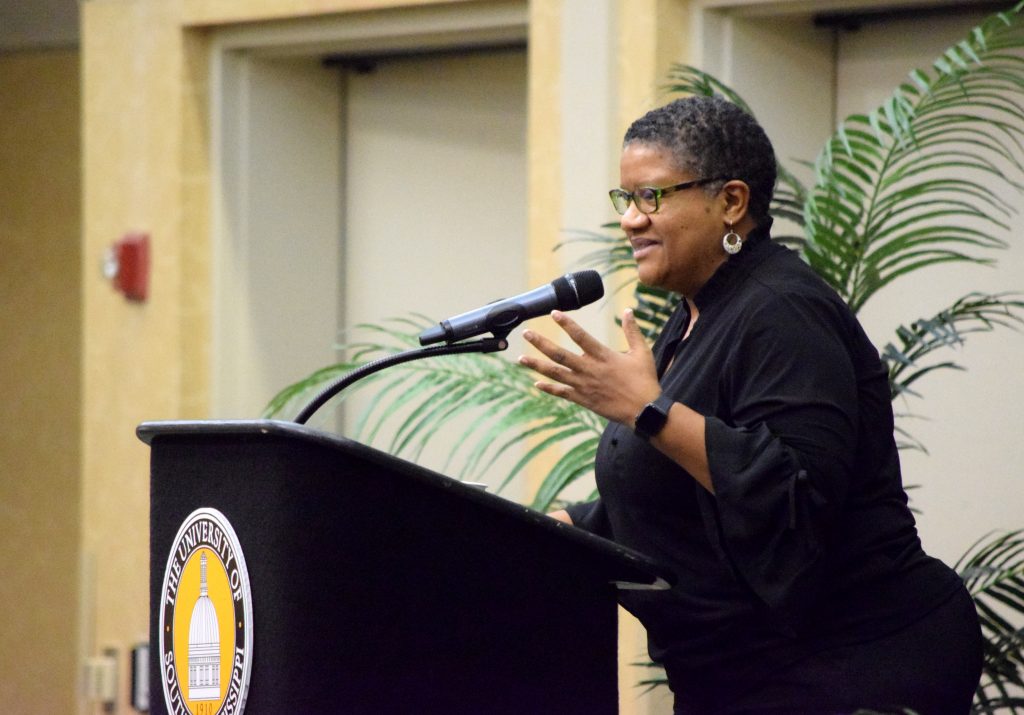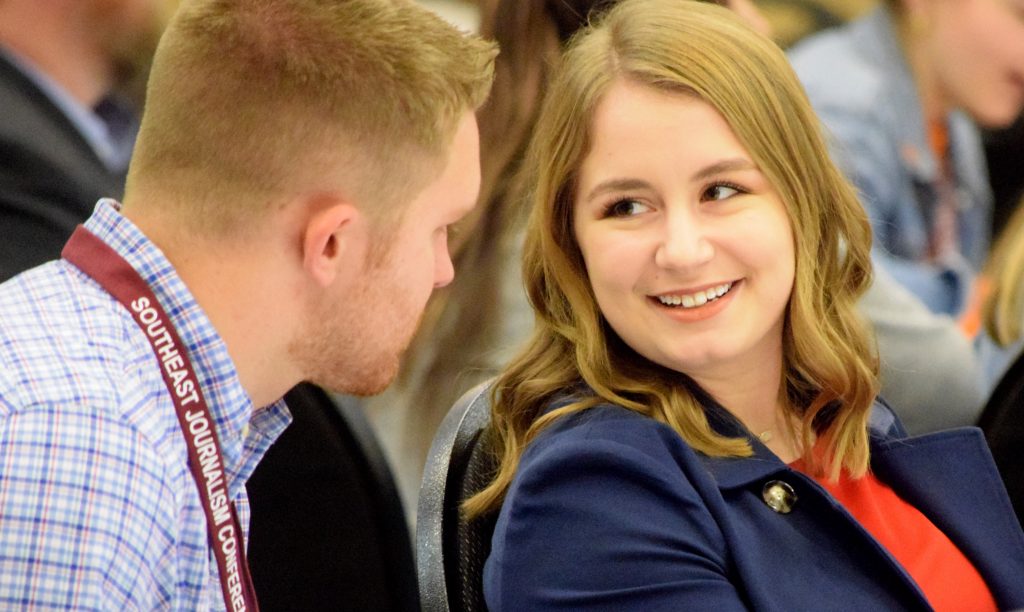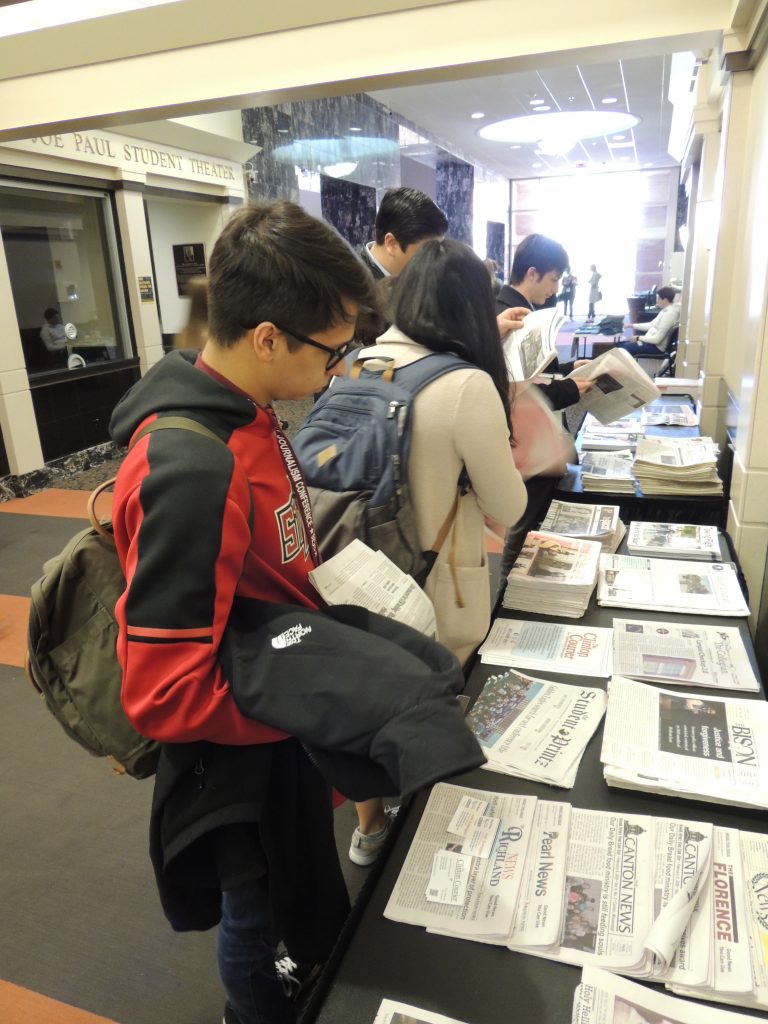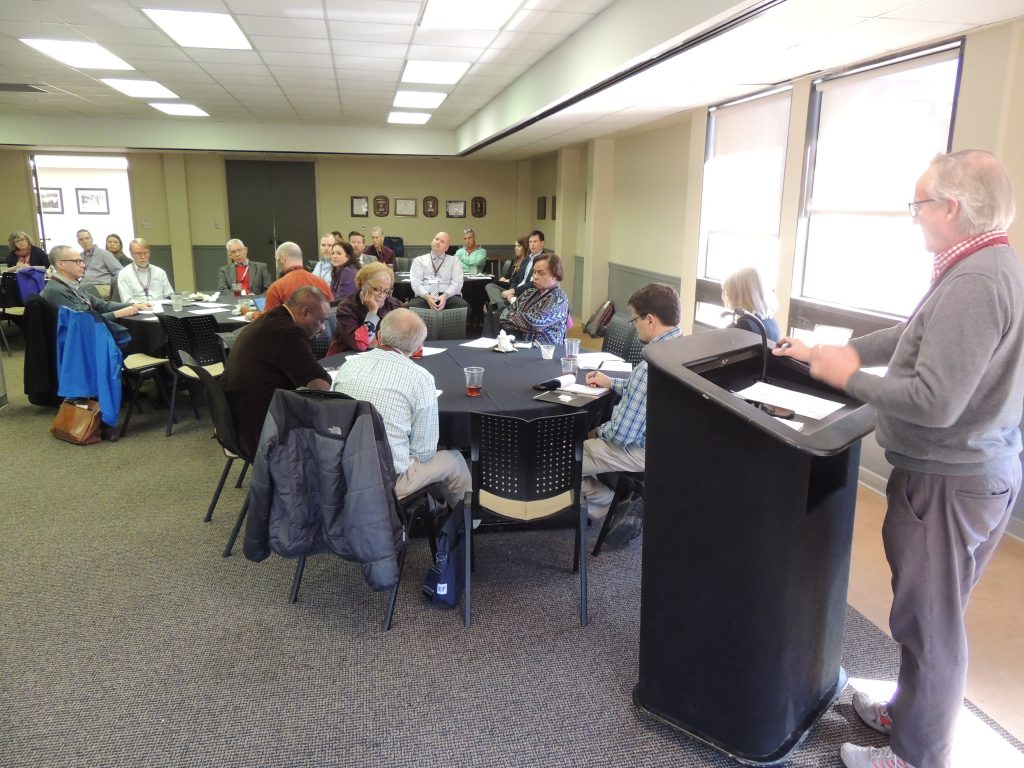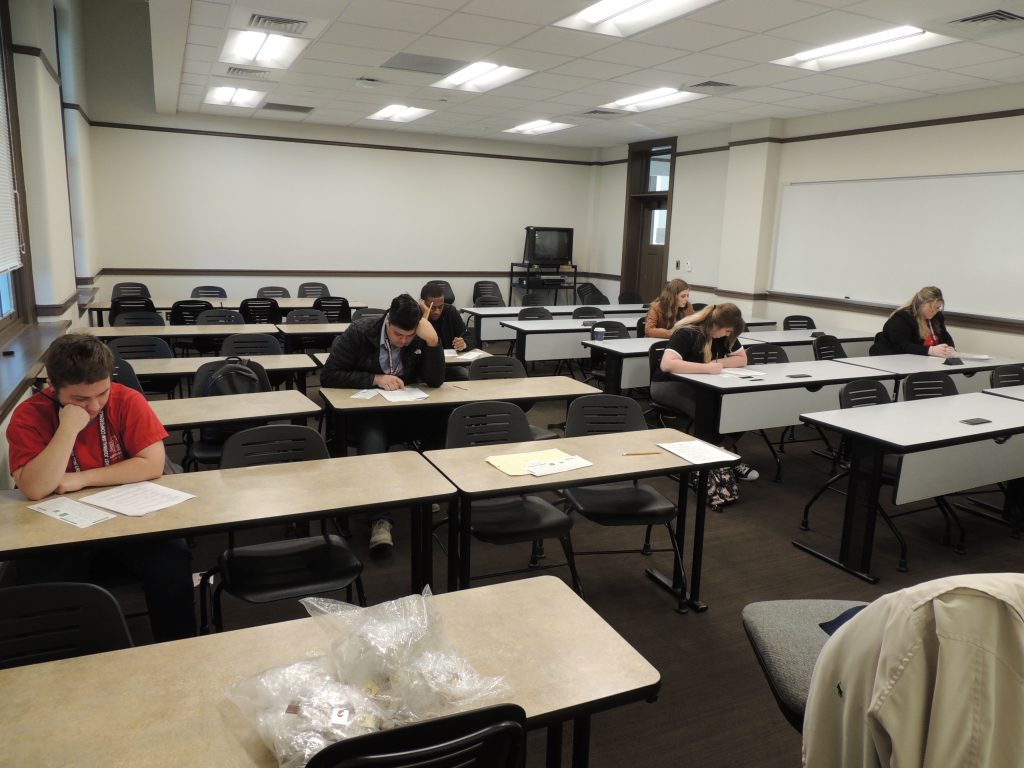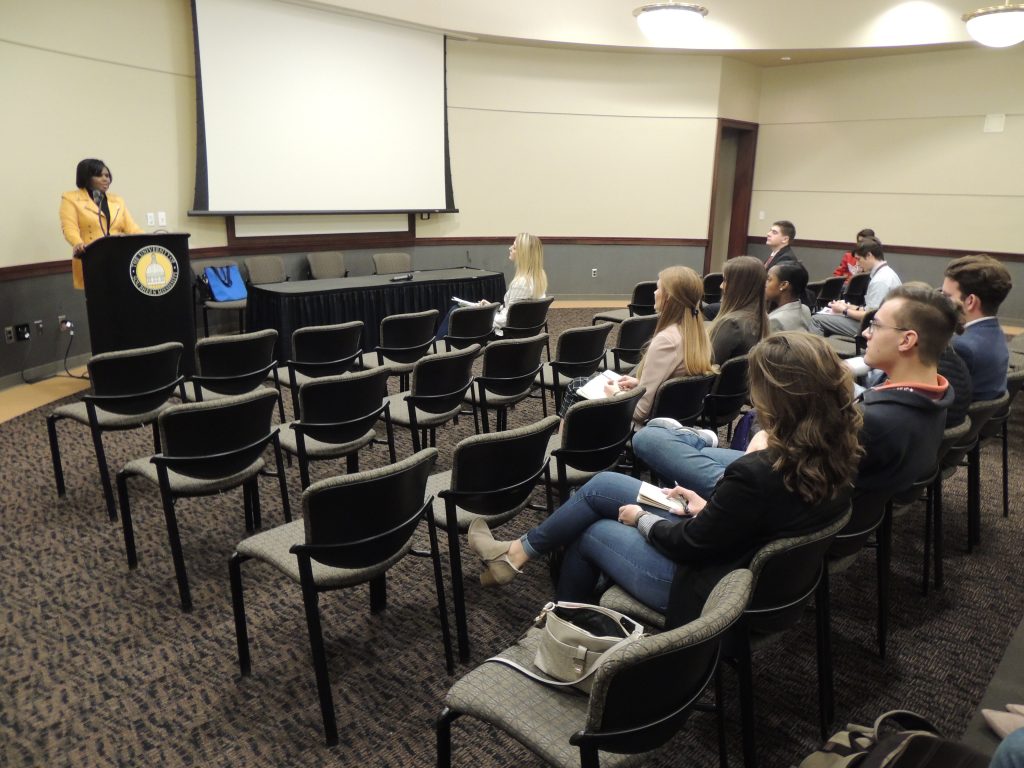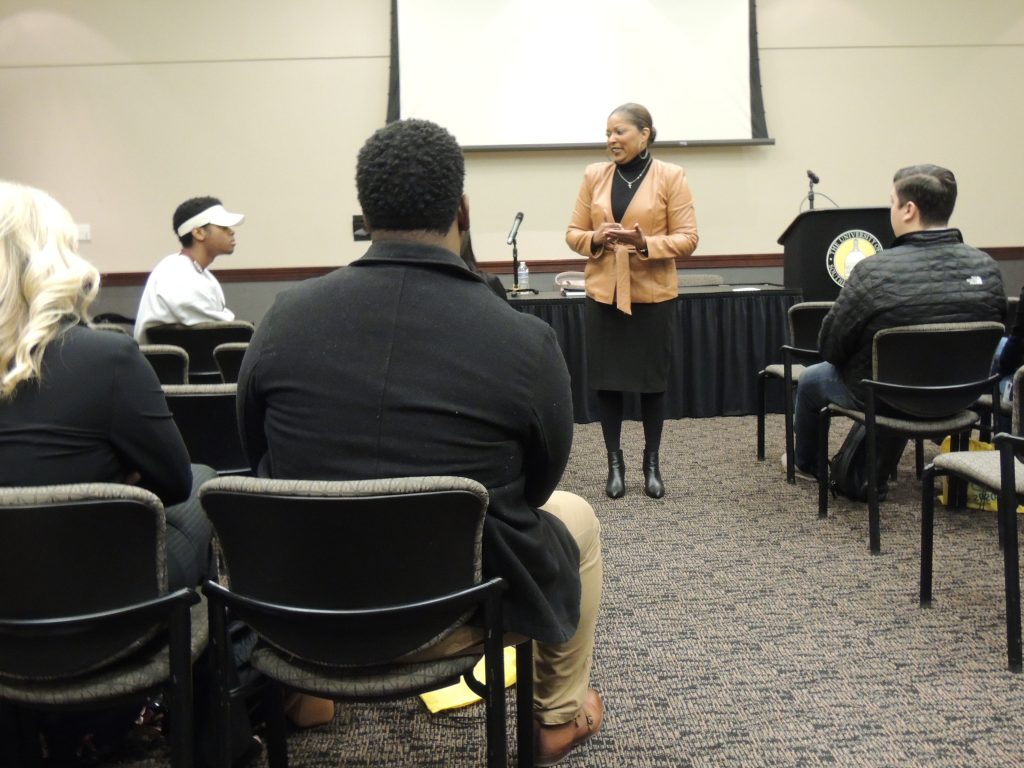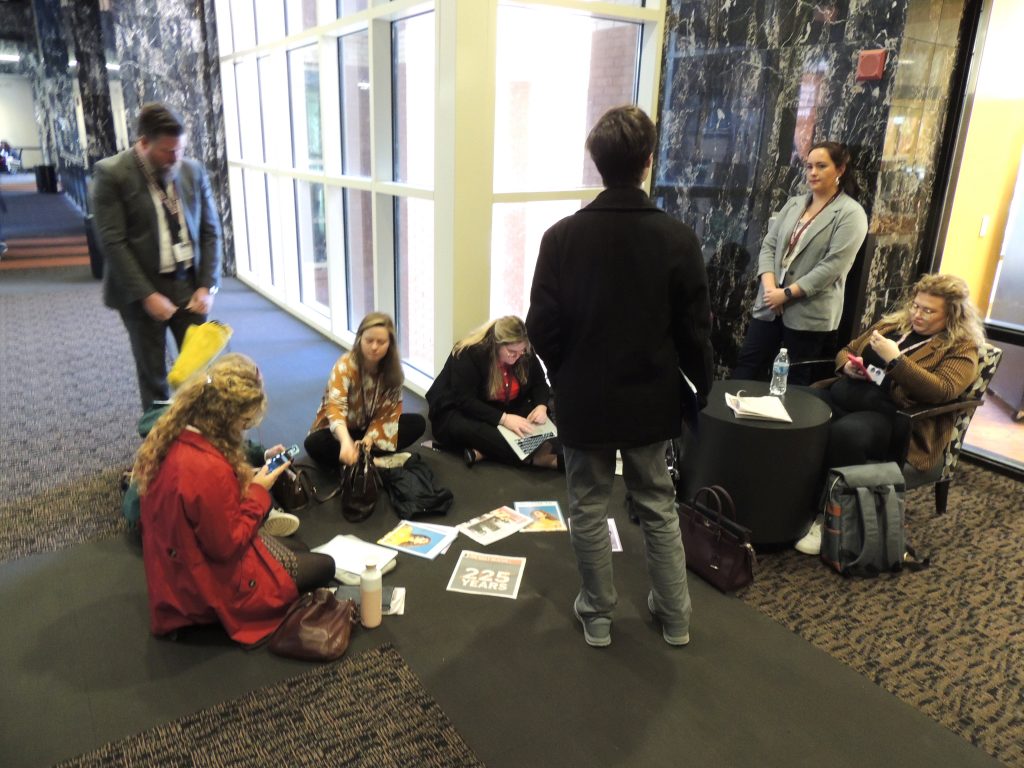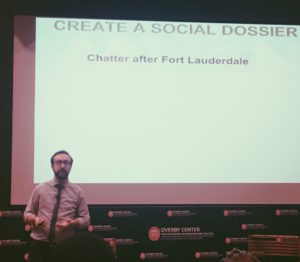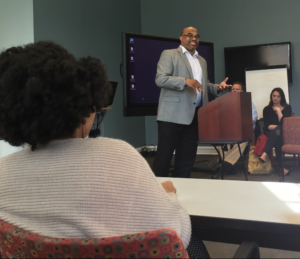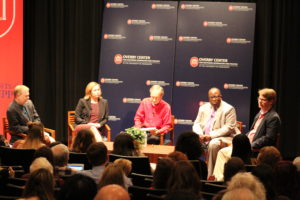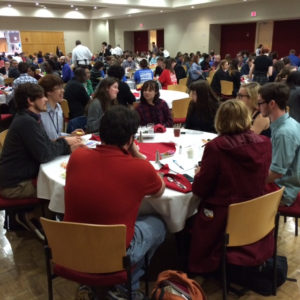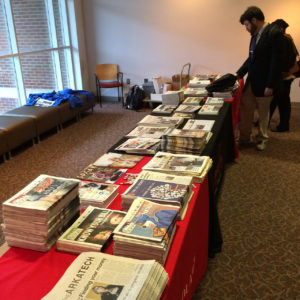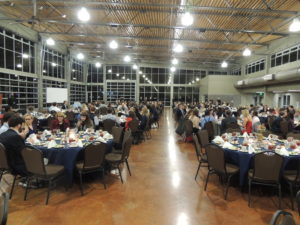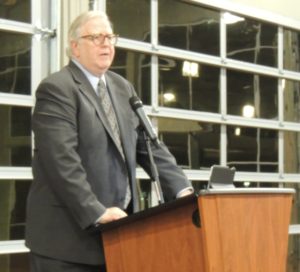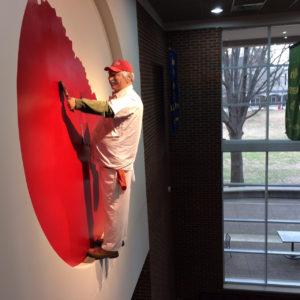Deb Wenger, a trainer of Google News Lab, led an interactive presentation at the SEJC convention at Ole Miss, which demonstrated ways that aspiring journalists can utilize accessible tools to improve their future writings.
“How many of you search Google more than 10 times a day?” Wenger asked to a crowd of about 40 students as she introduced her presentation.
All hands in the audience rose in response.
“The goal of the perfect search engine is to understand exactly what you need and return exactly the results that you want, regardless of what you put in the search box,” she declared.
Wenger showed how searches can be narrowed, depending on what is entered in the search bar.
She exhibited how to include or exclude words that appear in search results, as well as how to locate postings specifically from certain domains or posted by particular websites.
“This is a good tool if you do a lot of Google searches to refine and narrow what you get,” she reiterated.
Wenger then shifted from word searches, to image searches.
She asked the audience, “How many of you have had a story before where you didn’t have an image, so you went to Google Images to find something that would fit with it?”
The majority of hands rose again.
Wenger stressed the importance of using searched images in stories if the rights are available.
“The one that you’re looking for is the one that is labeled for reuse and modification. That means that you can take that photo and do what you want with it,” she explained.
She also showed attendees how to conduct a reverse image search, to discover where an image originated. She stressed that reverse image searches can often unveil hoaxes or “fake news” once the origin is discovered.
She projected a picture of a photo that circulated as Malaysia Airlines 370 crash footage. However, after a reverse search, she proved that the photo had been edited and was obviously a photo from the television show, “Lost.”
She projected another image of a ballot, circulated on Election Day, which claimed Donald Trump was not on the ballot in Oregon. After another reverse image search, it was revealed that the photo originated from a man’s personal Facebook profile.
“It’s probably not an official ballot if it’s on only one guy’s Facebook feed,” she suggested.
Wenger joked that she uses this feature to check pictures provided by students as excuses from tests and homework assignments. She gave the example of a reverse search that she did on a picture of a car accident.
She chuckled as she said, “I upload and I’m like, ‘Huh! Amazing! How’d you end up in Brazil?!”
The audience joined her laughter.
“This is where I think it gets fun,” she said as she switched gears from image searching to discussing Google Trends.
Google Trends tracks the trends of popular internet searches, updating results every three to five minutes.
“We’ve become a much better predictor in breaking news situations about what the problems are that people are interested in,” she proclaimed.
Wenger asked the audience to guess one of the five most commonly searched cities in the United States within the past year.
“I still haven’t heard one,” she teased as an array of incorrect cities were called out from eager students of the audience.
Eventually, a student called out, “Flint, Michigan?” and was rewarded with a large T-shirt that Wenger tossed across the room to him.
She flashed the five most-searched cities on the projector: Flint, Baton Rouge, Charlotte, Dallas and Palm Springs.
She continued to test and toss T-shirts to other students who correctly responded and exclaimed trends.
“The most important thing for us as journalists to think about with Google Trends, is how much more honest it is than polling or talking to people. It allows us to connect to our audience about what they’re really asking questions about,” she said.
Searching behind a computer is a safe, judge-free zone, she said. People are more likely to ask questions behind the safety of a screen, than to risk potential ridicule for ignorance from peers.
After a presidential debate last fall, Wenger said that the most-related search to Hillary Clinton was, “What is Roe vs. Wade?”
“We always have to take this data and apply it to journalism,” she explained.
She elaborated that through Google Trends, journalists can get ideas on what questions people want answered in stories, as well as what topics people care to read about.
She offered one final tip regarding how stories can be improved through the use of visuals and maps, by utilizing My Maps and Google Street View.
She prompted attendees to download the Google Street View application. She then urged everyone to test it by standing, rotating in place and taking a 360-degree photo of the auditorium.
“Page views are still relevant and important but ‘time on site’ is something that has become even more important to news organizations to try to keep people on their site,” she said. “So, when they take that extra time to absorb what’s on that 360 image, that’s a benefit.”
Wenger also explained how maps serve as a helpful contribution to stories.
“Any web map can be embedded on any website. If someone makes a map that works, you can use it,” she declared. “And get in the habit of searching for a map if your story has a geographic component to it.”
She gave the example of a map that tracked the path of Malaysia Airlines 370 before it disappeared. This map was featured in a story about the crash. She also provided the example of a map pinpointing where fires were in California embedded in a fire cover story.
Through the many Google News Lab training sessions that Wenger has led, she said she often finds that many journalists are ignorant of how to access of these tools.
“Tools have gotten better. Google News Lab has listened to journalists and made them easier for them to work with, but journalism students are extremely busy,” she explained. “You may have heard about it, but unless it’s in your daily routine, you forget that it even exists.”
